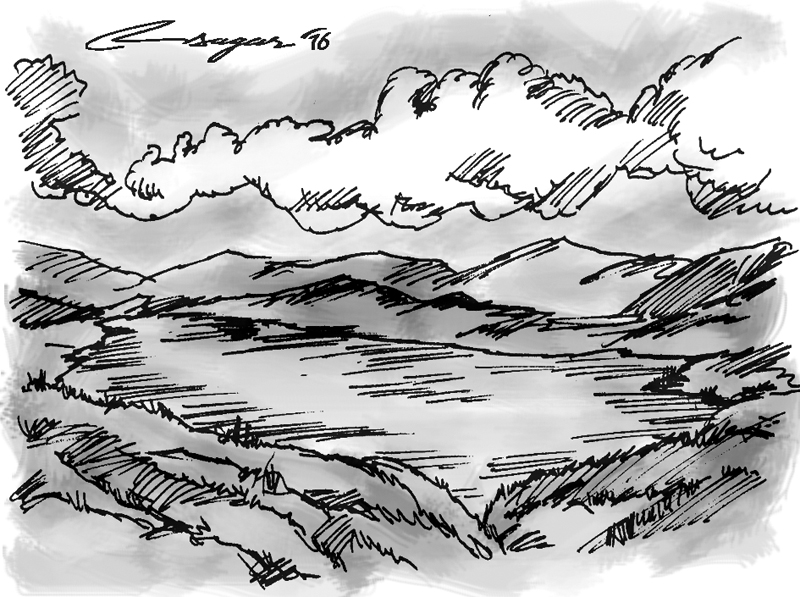Rara National Park: Potential touristic hub
It is high time the Rara National Park staff worked to conserve wildlife and
livelihood improvement. It is the responsibility of park authorities to pay due attention to the conservation of rare and endangered species
Rara National Park is the smallest National Park of Nepal located in the Himalayan region of Mugu and Jumla districts.
It was established in 1976 AD and has a total area of 106 sq. km. This National Park has 51 species of mammals, 272 species of birds, two species of reptiles and amphibians, and three species of fishes.
According to National Park and Wildlife Conservation (NPWC) Act 1973, the overall objectives of National Parks are to conserve biodiversity and to maintain its unique landscapes. But Rara National Park is confined to Rara Lake.
Rara National Park is not only meant for conservation of the Rara Lake but also for wildlife conservation and socio-economic development.
The rare and endangered species of wildlife found in the park are Himalayan black bear (Ursus selenarctos thibetanus), red panda (Ailurus fulgens), musk deer (Moschus chrysogaster), leopard cat (Prionailurus bengalensis), Assamese monkey (Macaca assamensis), grey wolf (Cansis lupus) etc.
A study shows that Rara National Park is also the prime habitat of the endangered red panda (Ailurus fulgens). In 1979, three endemic snow trout species were collected in Rara Lake and described as new; the Nepalese snow trout (Schizothorax nepalensis), the Rara snow trout (Schizothoraz raraensis) and Schizothorax macrophthalmus.
Also in 1979, the frog species (Paa rarica) has been recorded as endemic to the lake. Rara National Park incorporates the smallest species of rhododendron in the world. Many initiatives have to be undertaken for wildlife conservation, revenue generation of the park as well as livelihood improvement.
Protected Areas (PAs), including National Parks, have played a significant role in the tourism industry. More than 60% of the total tourists visit the PAs of Nepal. Due to the geographic remoteness and lack of good transportation, the number of tourists visiting the Rara National Park is not satisfactory.
Statistics show that the total number of tourists visiting this National Park was nearly 8,000 in the fiscal year 2015/16 which is the least tourist flow among National Parks of Nepal. So, it was the least revenue generator in the same fiscal year with NRs. 5 lakh 52 thousand whereas the Chitwan National Park generates NRs. 290 million.
It is a great challenge to maximize revenue generation for the Rara National Park. Despite the challenges, we have many opportunities too. For harnessing the economic opportunities, the National Park must take some long term actions.
Its regulations fall in the Mountain National Parks Regulations (1979 AD). First of all a separate Rara National Park Regulation must be formulated and executed effectively. There is no system for taking the entry as well as boating charges for Nepalese nationals. So, the National Park must start to levy entry and boating charges.
Karnali region is a potential touristic hub. Ecotourism has been a great boon for this region as nature has provided it natural beauties and many means of adventures.
Tourism entrepreneurs and investors should be encouraged to establish hotels and lodges in the Majhaghatta (Western part of the National Park). Similarly the practice of home stay could be started like in other national parks.
Mugu and Jumla districts are rich with Nepali folk songs (Lokdeuda, Lokgit, Magal), Buddhist culture and traditional attires.
These traditional songs and rare cultures could entice tourists. The buffer zone people could launch different programmes like horse riding around the Rara Lake up to the Murma Top (3600m), nature walk, cycling, migratory/wetlands birds watching in the winter and sighting of natural beauties and landscapes from the Murma Top and Chuchemara peak (4039m).
These activities would support the local economy by improving livelihood and providing employment opportunities.
However, overgrazing, illegal poaching, timber smuggling and forest fire are rampant in the National Park.
The authorities are not firmly dedicated to wildlife conservation. According to the locals, wildlife are decreasing in the National Park. There must be a provision of strict punishment to staffers who don’t obey the rules and regulations of the respective department.
Moreover, it is better to relocate hotels and National Park offices at suitable highlands away from the vicinity of Rara Lake for maintaining its natural charm. The Government of Nepal must formulate a strict scientific policy for hotel entrepreneurs inside the park.
From the ecological and environment point of view more hotels inside the park are detrimental to it.
It is high time the Rara National Park staff worked to conserve wildlife and livelihood improvement. It is the responsibility of park authorities to pay due attention to the conservation of rare and endangered species.
These species are the major attractions for tourists capable of establishing Rara National Park as a perfect wildlife destination of Nepal. Rara Lake is the biggest and deepest lake of Nepal.
It has been listed as a wetland of international importance.
Still publicity about the park is lacking. Therefore, all the park authorities and the stakeholders must be serious about three matters: Conservation of Rara Lake, conservation of wildlife and livelihood improvement.






